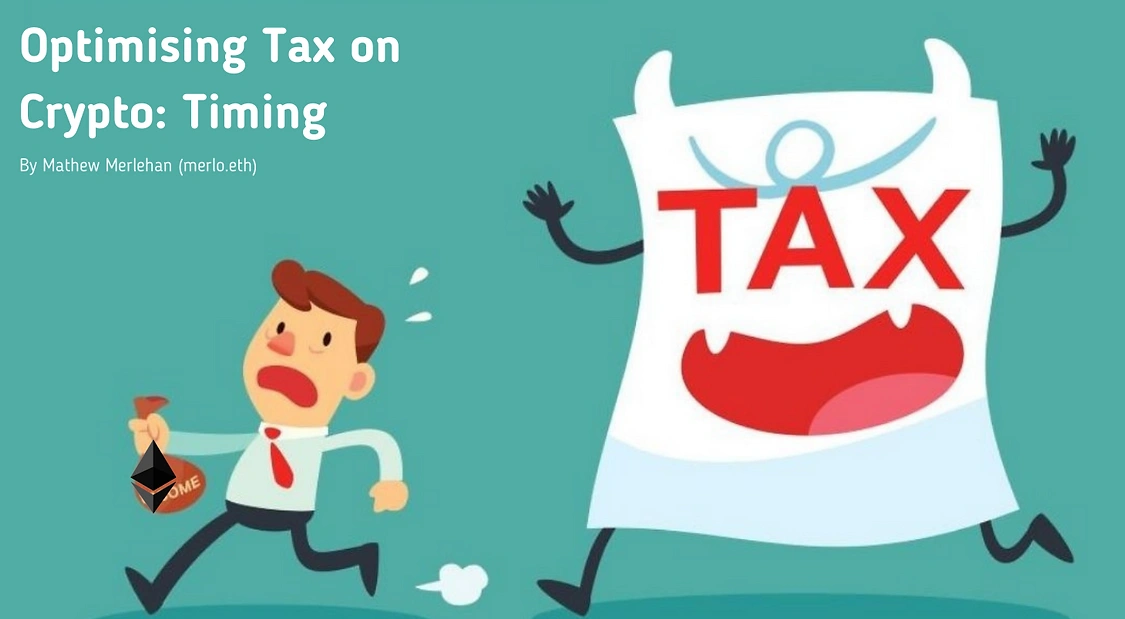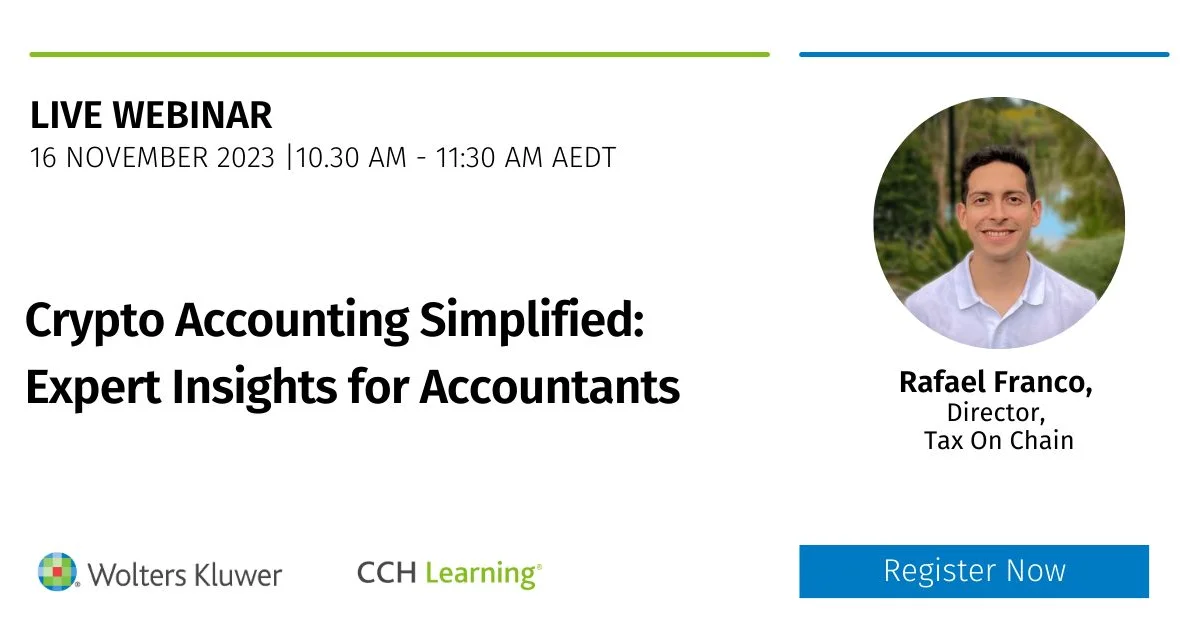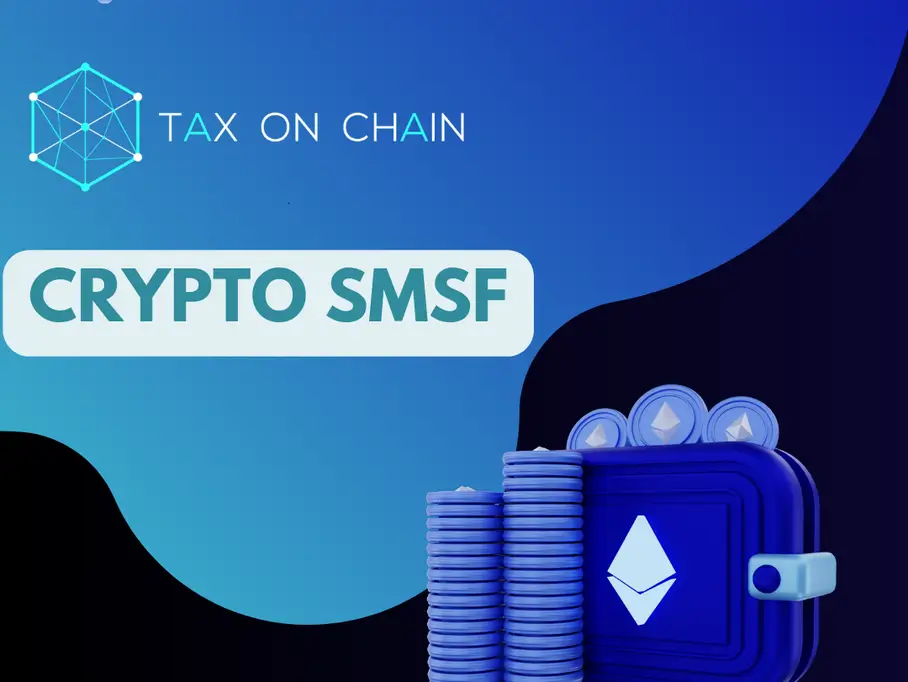Disclaimers – this article:
- Is not tax advice, financial advice, legal advice or security advice;
- Is intended for Australian readers but may be relevant to others;
- Focuses on Ethereum but may be relevant to other Ethereum Virtual Machine (EVM) compatible or equivalent blockchains;
- Contains opinions that are my own; and
- Is not sponsored.
Timing is Everything
Like many things in life, timing is everything when it comes to optimising your cryptocurrency tax obligations. A large amount of the work crypto accountants and tax agents do on a day-to-day basis is look to what has already happened. While there are some options available to optimise for events in a financial year that have already happened, there is a real untapped power when you plan ahead.
Tax planning can be any number of things including, but not limited to:
- Selling off assets to crystallise Capital Losses (commonly referred to as “Tax Loss Harvesting”);
- Bringing forward or pushing back income;
- Bringing forward or pushing back deductions including superannuation contributions; and
- Compiling a cash reserve for expected tax obligations.
This article will elaborate on each of these further.
Before You Start
It goes without saying but if you don’t have your records in order, it is hard to accurately plan ahead. Before you consider any of these exercises, be sure to review your crypto records and make adjustments as needed.
If you use a cryptocurrency tax software solution, make sure you have imported all of your transactions from all sources and have categorised them appropriately.
Tax Loss Harvesting
Commonly used when capital gains are expected, this is a method that involves disposing of assets that have gone down in value since purchase to realise capital losses. Sometimes this means airing out your dirty laundry and finding coins or jpegs that you have held to the bottom. This, in turn, reduces your overall capital gain, your taxable income and your tax bill.
Rewire how you think of Capital Losses from your cryptocurrency investments:
In order to realise the loss, these assets need to be disposed. For tax purposes, this can be a number of things:
- Selling on a crypto exchange;
- Selling on a tax loss harvesting service such as NFT Loss Harvestooor;
- Sending to the burn address; and/or
- Transferring to someone else such as a spouse, child, other family member, or even to a company or trust that you control (Optimising on tax: Structuring article for more on structures).
Rugged Centralised Platforms: Insult to Injury
The above options are easily accessible if your potential losses are tokens you have full control over in a self-custodial wallet. However, for those that have assets held on a centralised exchange, lending platform or any other company that has since entered into administration or liquidation, you may have a long road ahead before any potential losses can be claimed.
In these situations, an Administrator or Liquidator have several steps to undertake during such a process and depending on where you stand in the order of merit, you may get anything from all to none of your money (or assets) back. This kind of exercise can take a significant amount of time and it is generally not known how much, if anything, certain classes of creditors will get back for quite a while. One only needs to look to MtGox as a worst-case example of how long such a process can potentially take.
The details may vary depending on the jurisdiction but broadly once the process is complete and it is known how much will be distributed to creditors, customers and equity holders, the Administrator or Liquidator will make the distributions and provide a statement for your records. In Australia, if there is nothing further to distribute, the Administrator or Liquidator will make a declaration, known as a Capital Loss Declaration under Income Tax Assessment 1997 s104-145, that shares or financial instruments (including a loan to the company) are now declared worthless.
It is at this point that any loss incurred on that investment can be recorded for tax purposes.
Bring Forward/Push Back
Most people focus on optimising for tax in a crypto bull market, where income and capital gains have spiked and there is a need to manage that income downwards. However, is equally useful consider your options for optimisation of tax in a bear market. Doing so can help to smooth out spikes in income, utilise tax brackets to their fullest extent and potentially set you up for the next bull market in the most tax-optimal way possible.
The below relies on the assumption that you report income on a cash (or receipts) basis, as set out in Taxation Ruling TR 98/1. If you are a retail level investor, regardless of your operating structure, this is likely to be the case. However, you may wish to confirm this with your cryptocurrency accountant or tax advisor.
TL;DR – Tax Optimisation Cheat Sheet
- Bull market things: Push back income, bring forward deductions
- Bear market things: Push back deductions, bring forward income
Income
As an employee, most individuals have been forced to report income when it has been received. Most employees may also rely on their salary or wage to meet their personal cost of living, so it’s less likely they would agree to their employers not paying them for the sake of tax optimisation. Conversely, most employers are unlikely to agree to advance payment of wages for the sake of your personal tax optimisation.
However, most individuals holding crypto assets use them as a passive source of income. Additionally, depending on how an asset has been set up to generate income, there may be an opportunity to choose when to realise that income.
This can be particularly effective towards the end of a financial year (in Australia, during the months of May and June) when there is less time-based price risk for a given asset. In a bull market, you could wait to claim income after 30 June and effectively deferring the tax implications until the next financial year. Conversely in a bear market, you could claim that income earlier or more frequently than normal and reduce the income to be claimed in the next financial year.
If you hold your crypto assets in a discretionary trust, you also have full flexibility to decide where your income will be declared. As trustee, you can choose to declare more or less income in your personal name, depending on your expected income for the year. Companies set up for the sole purpose of being a beneficiary of trust income (colloquially known as a “Bucket Company”) are particularly useful in bull markets, where the tax on income is capped at maximum of 30%. During bear markets, the retained earnings of that company, along with the tax credits on those earnings (known as “Franking Credits”) could then be paid out to shareholders as a dividend.
If you’re interested in how these structures work, see Optimising on tax: Structuring.
Deductions
Like work related deductions (and unlike most sources of income), individuals also have the ability to choose when to pay for certain deductions relating to their passive sources of income from crypto. Some examples of potential deductions include, but are not limited to:
- Office consumables (computer accessories, stationery);
- Office furniture & equipment worth less than $300* (desk, chair, monitors, hardware wallets, hardware security modules); and
- Subscriptions (education, charting, antivirus, record keeping software solutions).
*Furniture & equipment worth more than $300 can also be claimed as a deduction, however it has to be claimed as depreciation of that asset over its effective life, as determined by the tax man. As such, it may not always be an effective deduction.
There is also an opportunity to claim certain Statutory Deductions such as donations to Deductible Gift Recipients (DGRs) and contributions to your superannuation account. There is a lot to consider when it comes to consider superannuation contributions including, but not limited to:
- Limits to contributions including, but not limited to:
- Caps on deductions for concessional superannuation contributions, which include both personal and employer contributions; and
- Access to unused concessional contribution caps from up to the previous five years if you have a Total Superannuation Balance (TSB) of less than AUD 500,000 (refer to the ATO website for more on this); and
- Personal financial considerations to determine whether you can afford to lock your money away until you retire including, but not limited to:
- Time to retirement;
- Current and future expected income and funding sources;
- Current and future expected expenditure and funding obligations; and
- Ability to sell assets or access funding in a pinch.
For this type of deduction, it is worthwhile speaking to both a tax and a financial advisor to ensure you make an informed decision.
Much like income, it is more tax effective to bring forward deductions when your income is higher and push them back when your income is lower.
Set Cash Aside
If, after you have considered all of the above options, optimised your tax position as far as you can and you still owe tax, the next best tax planning strategy is to simply ensure you have the cash available to make prompt payment.
While not a requirement, astute investors will take a portion of their proceeds when disposing of a given asset and set it aside in a separate wallet or bank account to meet this obligation and avoid liquidity issues further on.
Conversely, in a pinch you may be able to pay off your tax debt over a period of up to 12 months, potentially even 24 months in extreme circumstances. However, you will want to balance this with the General Interest Charge (GIC) that the ATO applies against tax debts, which can change on a quarterly basis. Refer to this ATO page for current GIC rates.
For Australian crypto taxpayers, it may not always be ideal to hold cash reserves in USD-denominated stablecoins due to the price fluctuation of USD relative to AUD. At the time of writing, there also aren’t many viable on-chain AUD-denominated options. As such, you will need to carefully consider whether you keep your cash reserves in the crypto or fiat ecosystem.
If in Doubt, Advisor Your Way Out
As always, the extent to which you can plan and execute on any number of the above options yourself will be determinant on your own ability and confidence to accurately apply the above and any other taxation concepts to your circumstances. Seeking advice from a trustworthy Australian crypto tax advisor can give you peace of mind that you are on the right track and potentially save you thousands, tens of thousands or even hundreds of thousands in minimised cryptocurrency tax obligations.



